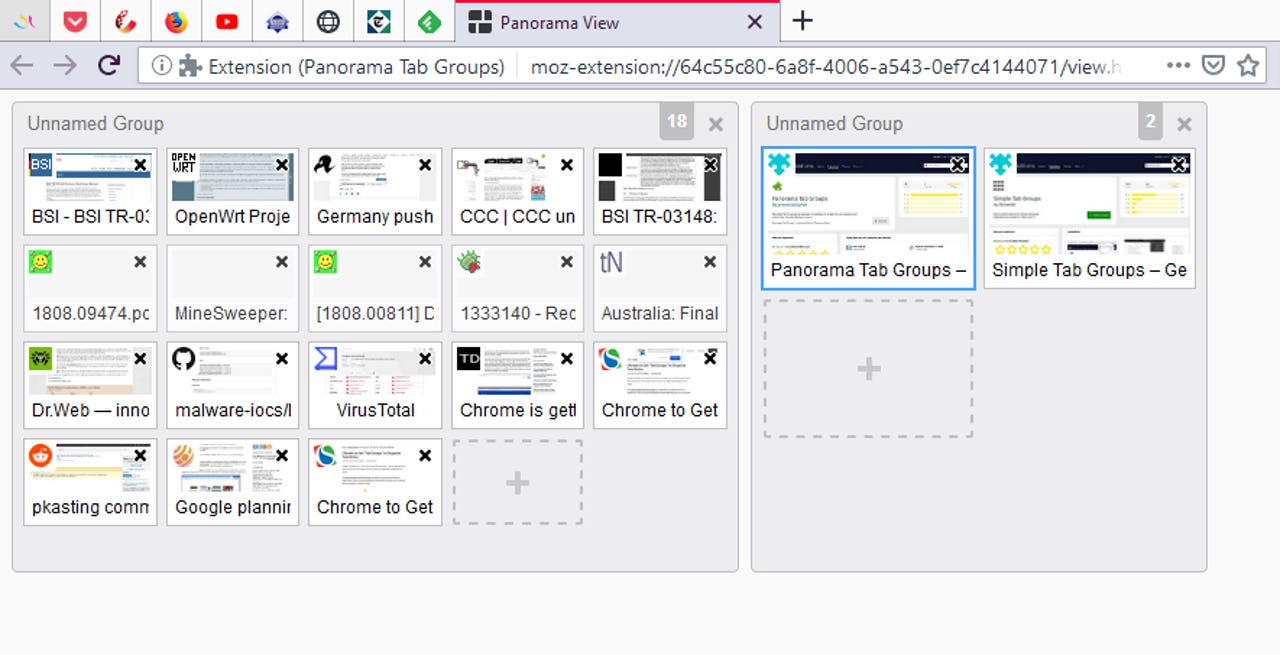Google is raiding Firefox for Chrome's next UI features

After Chrome 69 shipped with a new user interface that made many users think Google had copied Firefox's old Australis interface [1, 2, 3], Google engineers are now also working on porting two other Firefox features to Chrome --tab groups and a scrollable tabs bar.
Both features are currently in the works, and there's no deadline on when users will see them in a stable Chrome release, at least for the time being.
Tab Groups
The first of these new upcoming features is named "Tab Groups," described in this Chrome bug tracker entry.
The Google employee who opened this new issue --meant to be implemented in Chrome's desktop UI-- didn't spare too many words to describe the way it works, only revealing that "users can organize tabs into visually distinct groups, e.g. to separate tabs associated with different tasks."
The feature's description is pretty vague, but it's worth noting that Mozilla had a similarly named feature that it added in Firefox in 2010, a feature that let users organize tabs inside groups, only showing the tabs of one group, and hiding the other tabs.
The feature was great for users who liked to work with tens or even hundreds of tabs at the same time, but Firefox engineers removed it in late 2015 because very few users actually used it, compared to the entire Firefox userbase, and they didn't see fit to port it to Firefox's new Quantum engine that launched in 2017.

How Tab Groups used to look in Firefox
But, we admit, we might be wrong on assuming that Google plans to support a tab groups feature similar to the one supported by Firefox. Another avenue that Google engineers might choose is to support the tab stacking/grouping mechanism supported by the Vivaldi browser, which allows nesting several tabs inside a "tab container."
Scrollable tabs bar
Adding support for tab groups makes sense since this will help fix one of Chrome's biggest problems --tab cluttering.
Tab cluttering happens when users open too many tabs, which indirectly leads to Chrome automatically reducing the width of each tab to a size that makes it impossible to read the tab title or see the site's favicon. Finding a desired page inside a list of tens of tiny little tabs is awfully annoying the more tabs a user has opened.
However, Chrome is not the only browser affected by this interface design problem. Vivaldi, Opera, and Brave also do the same thing. On the other hand, Firefox and Edge do not. Both browsers implemented a feature called tab bar scrolling, which keeps tab width at a certain minimum size, but allows the user to side-scroll tabs using left/right arrows and the mouse scroll.
Google will ship a similar feature in the upcoming future as well. "Scrollable tabstrip is in the works," said Peter Casting, an engineer for Google Chrome, answering a user on Reddit.
Searching the Chrome/Chromium issue tracker we find that scrollable tabs has been one of Chrome's most requested features in the past years, and the page tracking the feature's implementation has been created more than a decade ago, in September 2008, even before Google Chrome first stable release --Chrome 1.0. It's pretty clear that users want this feature.
Google Chrome tip: Use the built-in Task Manager to find out which tabs are eating your RAM
More browser coverage:
- Google Chrome 71 will continue crackdown on sites with abusive ads
- Chrome 71 will warn users about websites with shady phone subscription forms
- Mozilla announces ProtonVPN partnership in attempt to diversify revenue stream
- Mozilla will match all donations to the Tor Project
- Version 2.0 brings Vivaldi web browser inline with the competition TechRepublic
- Opera for Android adds support for blocking EU cookie popups
- Mozilla gives Firefox Focus a browser brain transplant on Android CNET
- Google launches VisBug, a Chrome extension for point-and-click web design